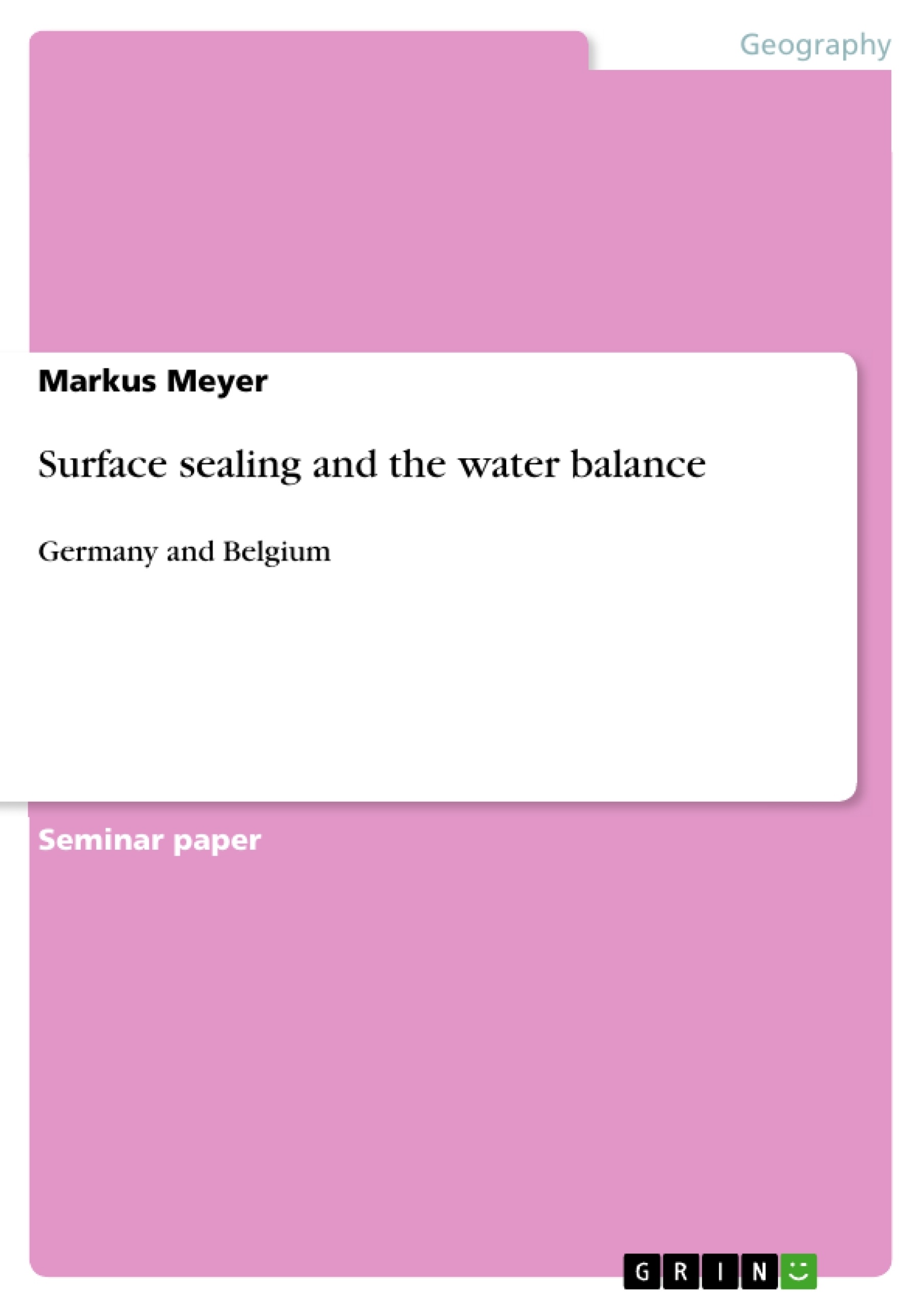This report investigates the relationship between the degree of imperviousness – surface sealing – and the water balance – surface runoff, evapotranspiration and infiltration. It synthesizes case studies for the cities Leipzig, Dessau and Munich in Germany and the Grote-Nete catchment in Belgium and compares the effect of different urban land uses on the water balance. The annual precipitation ranges from 530 to 950 mm. Depending on the respective hydrological properties and land use characteristics a linear increase of surface runoff with increasing degree of imperviousness could be found for all of the German studies. Evapotranspiration and infiltration decline with an increasing degree of imperviousness. The relationship for both is not distinct as for surface runoff. The impact on the water balance does not significantly deviate for different levels of precipitation.
Inhaltsverzeichnis (Table of Contents)
- Introduction
- Areas of study
- Methods
- Calculation of the water balance
- Matching of different studies by degree of imperviousness
- Estimation of the relationship of the water balance and degree of imperviousness
- Results
- Discussion
- Conclusion
Zielsetzung und Themenschwerpunkte (Objectives and Key Themes)
This report analyzes the relationship between surface sealing (imperviousness) and the water balance, focusing on surface runoff, evapotranspiration, and infiltration. It compares these effects across various urban land uses in cities like Leipzig, Dessau, Munich in Germany, and the Grote-Nete catchment in Belgium.
- Impact of urban land use on the water balance
- Relationship between imperviousness and surface runoff, evapotranspiration, and infiltration
- The influence of precipitation levels on the water balance
- Impacts of surface sealing on groundwater recharge and water storage capacity
- Effects of surface sealing on microclimate and atmospheric water content
Zusammenfassung der Kapitel (Chapter Summaries)
The introduction presents the concept of surface sealing and its significance in urban areas, highlighting the impact of impervious surfaces on the water balance. It discusses the degree of imperviousness in Europe and the increasing trend of land take, particularly in urban areas. The methods section describes the calculation of the water balance, the process of matching different studies based on their degrees of imperviousness, and the estimation of the relationship between the water balance and imperviousness. The results chapter will likely present the findings of the analysis, including data on the relationship between imperviousness and the different components of the water balance. The discussion section will probably analyze and interpret the results, exploring the implications for urban water management and environmental sustainability.
Schlüsselwörter (Keywords)
This report focuses on the keywords: surface sealing, imperviousness, water balance, surface runoff, evapotranspiration, infiltration, urban land use, groundwater recharge, water storage capacity, microclimate, and atmospheric water content.
- Quote paper
- Markus Meyer (Author), 2011, Surface sealing and the water balance, Munich, GRIN Verlag, https://www.grin.com/document/184670



